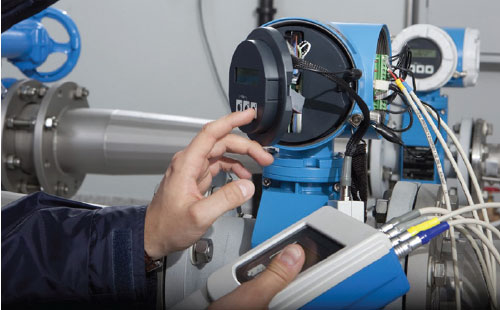- By Ben Myers
- IIoT Insight
Summary
In the aftermath of a failed military campaign or attempt to stop an enemy attack, critics may blame intelligence services, saying they did not "connect the dots" and understand the true picture of an incident. This suggests information existed, and may have been collected, but did not get to the right people. The effort was too fragmented to be effective.
A process manufacturing plant trying to determine why production suddenly and unexpectedly ground to a halt may go through a similar discussion. The process shut down in mid-operation because of an equipment failure that should have been anticipated and fixed before a complete breakdown, but nobody could connect the dots and recognize the indications of the developing problem. Device diagnostic data was available but remained lost in control system log files where technicians could not access it.
Solving situations like this requires a field device management system, one that can recognize which assets need attention, and then provide information on how to fix a developing problem before the situation escalates into a full failure, possibly causing serious and costly damage. This type of system can collect and analyze large amounts of data from a population of smart field devices, including process analyzers and instruments, along with other control devices such as valve actuators and positioners. The system can connect the dots automatically to ensure effective operation without interruptions, supplemented by more effective use of maintenance resources.
Manual versus automated monitoring

Unfortunately, such technicians are rare at many end user process industry companies, so the likelihood of one being in the right place at the right time is low. The critical information is available from the instrument, but no one is there to see it, and the failure results.
Imagine posing questions to the production manager of a typical petrochemical plant unit. "Why do you have all this automated, computer-driven control system equipment working with all those electronic field devices? Wouldn't it be better to operate the plant manually?"
The question would be considered nonsensical. Responses would undoubtedly include points like the huge number of people who would be required to perform repetitive and tedious manual tasks, contrasted with the efficiency and effectiveness of a well-designed distributed control system (DCS). A follow-up question might be harder to answer: "Why is so much of your asset health monitoring still manual? Shouldn't it be automated as well?"
Capabilities of asset health monitoring solutions
Today's sophisticated field devices can provide enormous amounts of data. Estimates suggest the basic primary variable represents barely 3 percent of the data originating from an instrument or analyzer. What does the other 97 percent represent? It varies based on the type of instrument—a differential pressure transmitter produces different information than a Coriolis flowmeter or smart valve actuator. But in general, it includes:
- Diagnostics: Discrete and continuous indicators for internal problem states and random failures of the sensor and electronic components. These can be indicated in various ways, including alerts and alarms. Device calibration history also resides here.
- Monitoring: Continuous asset and process indicators such as process noise, which can indicate changes outside an instrument's primary function.
- Soft sensing: Secondary, tertiary, and even additional variables. These can work individually or in conjunction with other instruments to approximate process measurements not directly measurable.
This article was adapted from the March 2021 InTech Focus: Temperature and Pressure.
Reader Feedback
We want to hear from you! Please send us your comments and questions about this topic to InTechmagazine@isa.org.


